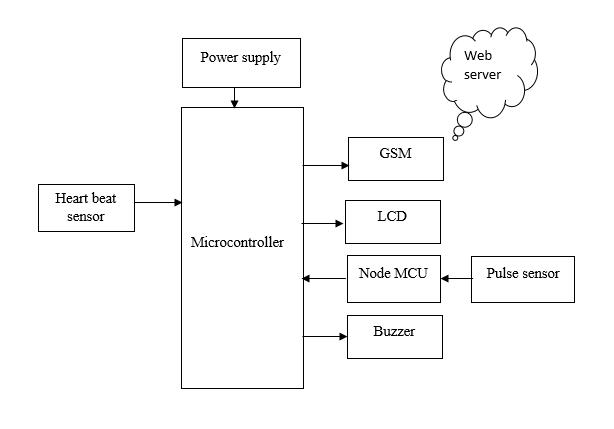IoT Based Heart attack Detection and Heart Rate Monitoring System
Objective
The main objective of this project is to detect heart beat values and uploading them to server for monitoring and generating alerts accordingly
Abstract
These days we have an increased number of heart diseases including increased risk of heart attacks. Our proposed system users sensors that allow to detect heart rate of a person using heartbeat sensing even if the person is at home. The sensor is then interfaced to a microcontroller that allows checking heart rate readings and transmitting them over internet. The user may set the high as well as low levels of heart beat limit. After setting these limits, the system starts monitoring and as soon as patient heart beat goes above a certain limit, the system sends an alert to the controller which then transmits this over the internet and alerts the doctors as well as concerned users. Also the system alerts for lower heartbeats. Whenever the user logs on for monitoring, the system also displays the live heart rate of the patient. Thus concerned ones may monitor heart rate as well get an alert of heart attack to the patient immediately from and the person can be saved on time.
Keywords: Heartbeat sensor , pulse sensor, IOT
NOTE: Without the concern of our team, please don't submit to the college. This Abstract varies based on student requirements.
Block Diagram

Specifications
Hardware Requirements:
- Arduino UNO
- Power Supply
- Heart beat sensor
- Pulse sensor
- LCD
- Node MCU
- Buzzer
- GSM
Software Requirements:
- Arduino IDE
- Embedded c
Learning Outcomes
- Arduino pin diagram and architecture
- How to install Arduino IDE software
- Setting up and installation procedure for Arduino
- Introduction to Arduino IDE
- Basic coding in Arduino IDE
- Working of heart bear sensor
- Interfacing of heart beat sensor with Arduino
- Working of pulse sensor
- Interfacing of pulse sensor with Arduino
- Working of LCD
- Interfacing of LCD module with Arduino
- Working of GSM
- Interfacing of GSM module with Arduino
- Working of power supply
- About Project Development Life Cycle:
- Planning and Requirement Gathering (software’s, Tools, Hardware components, etc.,)
- Schematic preparation
- Code development and debugging
- Hardware development and debugging
- Development of the Project and Output testing
- Practical exposure to:
- Hardware and software tools.
- Solution providing for real time problems.
- Working with team/ individual.
- Work on Creative ideas.
- Project development Skills
- Problem analyzing skills
- Problem solving skills
- Creativity and imaginary skills
- Programming skills
- Deployment
- Testing skills
- Debugging skills
- Project presentation skills





 Paper Publishing
Paper Publishing
